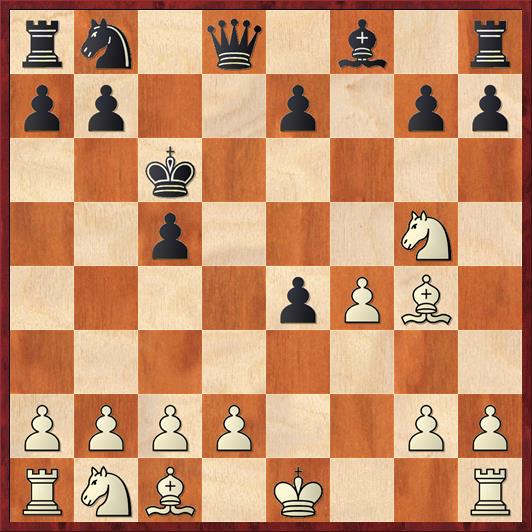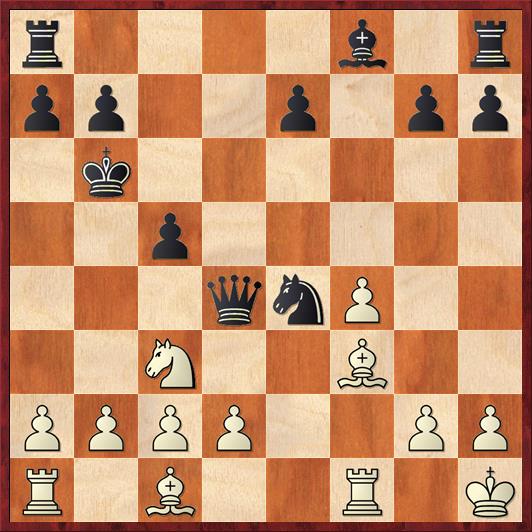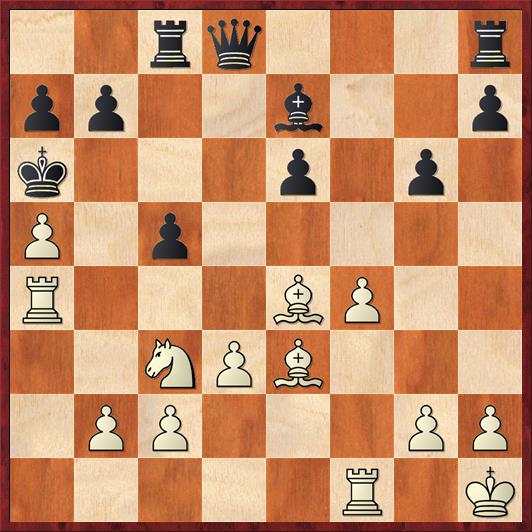If January 1 is a good time for resolutions, then July 1 is a good time for semi-resolutions. I’ve decided that it’s time for me to do away with playing chess against the computer, at least for the rest of the year.
One thing that crystallized this decision for me was meeting with Gjon Feinstein for a few blitz games last weekend, and realizing that they were my first serious games against another human, in person, since early January. I am excluding the online games I’ve played against humans, which of course are instructive but not quite the same as playing in person; also I am excluding the games I sometimes play in chess club against the kids, which are not serious games for me and which I only play as a good training exercise for them. (And because they ask me to.)
Also, when I met with Gjon, I showed him one of my recent games against Shredder, and he found it downright unpleasant to watch. Granted, the position was wild and crazy and the tactics amazing, but it just bore so little resemblance to normal games between humans that you couldn’t after the game answer the question, “What have I learned from this game that could enable me to play better in the future?”
But to end on a high note, I’d like to show you my last game against Shredder this year. It’s also only the second time I have ever beaten it when set at its highest rating (2600). I’ve played somewhere between 50 and 100 games against it at full strength, which should put my 2 victories into context for you.
This is also a good chance to show off my favorite opening again, the Bryntse Gambit, which I almost never get to play against humans but is easy to play against computers because they believe (incorrectly, in my opinion) that accepting the queen sac is good for Black. In my opinion it’s equal at best, and Black’s task is much more difficult than White’s.
Of course, Shredder at 2600 is usually up to the task, and Dana Mackenzie at 2100 (my strength in action chess?) usually makes mistakes eventually. But in this game, Shredder played with unusual passivity, and I had to find only one or two good moves to break through.
Dana Mackenzie – Shredder (2600)
1. e4 c5 2. f4 d5 3. Nf3 de 4. Ng5 Nf6 5. Bc4 Bg4?! 6. Qxg4! Nxg4 7. Bxf7+ Kd7 8. Be6+ Kc6 9. Bxg4 …

FEN: rn1q1b1r/pp2p1pp/2k5/2p3N1/4pPB1/8/PPPP2PP/RNB1K2R b KQ – 0 9
If you haven’t seen it before, this is the tabiyah or basic setup for the Bryntse Gambit. White gives up his queen for two pieces and a pawn and a massive list of other advantages: better-developed pieces, Black’s shaky pawn structure, Black’s exposed king. Generally speaking, success depends on keeping Black’s stronger pieces (especially the queen) bottled up and ineffective, while White’s smaller and more numerous pieces take over the board and eventually make too many threats for Black to cope with. White typically gets the initiative for at least 30 moves, far too many for a computer to calculate, and therefore computer evaluations of the position are at least somewhat untrustworthy.
9. … Qd6
Shredder likes this move and plays it often in the above position. In general, the computer places a little bit too much trust in its ability to generate threats with its queen, while ignoring its other pieces. Humans are more likely to play a move like 9. … e6 or 9. … e5 and try to get their pieces out.
10. O-O Nd7 11. Nxe4 Qd4+ 12. Kh8 Nf6
Of course, the computer would never fall for 12. … Qxe4? 13. Bf3.
13. Bf3 Nxe4 14. Nc3 …
White has a couple of decisions to make in the next two moves. I think that 14. Nc3 is better than 14. d3, because capturing on e4 with a pawn would open the d-file for Black, and close the e-file, which is sometimes useful for White because Black has a weak pawn on e6.
14. … Kb6
Now, which way would you capture?

FEN: r4b1r/pp2p1pp/1k6/2p5/3qnP2/2N2B2/PPPP2PP/R1B2R1K w – – 0 15
15. Bxe4! …
I played the less effective 15. Nxe4?! in a few games, but eventually I realized that the knight is better placed on c3 than e4, while the bishop on e4 is better than it was on f3. Just look at how many pieces are in each others’ way. After 15. Nxe4 the knight is in the way of the bishop and the bishop is in the way of the rook. After 15. Bxe4 nothing is in the way of anything else. Another benefit of 15. Bxe4 is that Black is discouraged from playing … e5 because that makes the beautiful square on d5 available to White’s knight.
15. … e6 16. d3 g6?!
Shredder starts making some strange decisions. Black’s biggest problem is lack of development, so 16. … Bd6 makes much more sense. Rybka evaluates the position as equal after 17. a4 a6 18. a5+ Kc7 19. Ra4.
17. a4 Rc8?
This is definitely a blunder; Black has to play 17. … a6 to create luft for his king.
18. a5+ Ka6
After this I was sure that I was at least better, if not winning. The king on a6 is a permanent target; he cannot get away without allowing … a5xb6, which will leave him in a hugely compromised position. One of Shredder’s weaknesses is that it does not understand permanent weaknesses or trapped pieces (which this king sort of is). It goes back to the horizon effect. Because Shredder does not have a concept of “move infinity” (i.e., a problem that cannot ever be solved in a reasonable way), it systematically underestimates that kind of disadvantage. I believe that is why it was willing to let its king be chased to a6: it sees that square as a short-term, maybe even medium-term safe haven.
19. Ra4 Qd8 20. Be3 Be7?!
This move highlights another quirk (I won’t say it’s a weakness) of computer chess: inconsistency. A human, after playing 16. … g6, would surely want to justify that move by fianchettoing his bishop. But Shredder, after feinting that way, says, “Nah, I want to put it on e7.” In this case, consistent was better: 20. … Bg7 would be a little bit more challenging for White.

2FEN: 2rq3r/pp2b2p/k3p1p1/P1p5/R3BP2/2NPB3/1PP3PP/5R1K w – – 0 21
21. d4! …
After this move, White’s game plays itself. The threat of 22. Bd3+ is too strong — Black cannot allow it, so he has to play 21. … c4. Incidentally, if Black had played 20. … Bg7 21. d4! would also have been good, and maybe this is why Shredder didn’t see any value to playing the fianchetto. However, the difference is that after 20. … Bg7 21. d4! is actually a piece sacrifice, so White would have had to do some calculation to make sure that 21. … cd 22. Bd3+ b5 23. Nxb5! de 24. Nd6+ leads to mate. That being said, I do think I would have found this variation.
21. … c4 22. Rb1! …
The last move that required serious thought for me. I really wanted to play 22. b4 but the variations after 22. … cb were still a little bit too murky. I finally realized that bringing my rook into play first makes the break b2-b4 stronger, and there is nothing that Black can do with his extra tempo. Rybka agrees with me, giving White an advantage of 1.7 pawns after 22. b4, but an overwhelming advantage of 3.8 pawns after 22. Rb1. In this case, computer chess and human chess are in agreement: Maximize the power of all of your pieces before you launch the final assault.
22. … Qd7 23. b4 Qxa4
Black’s defense is lamer than lame, but there just isn’t any good defense for Black, so Shredder pitches some material to slow down White’s attack.
24. Nxa4 Rhe8 25. Bf3 Red8 26. Nc5+ Bxc5 27. bc Rc6
Throwing away even more material.
28. Bxc6 …
Technically speaking, 28. Be2 is even better, but I figured that being a full piece up in a position where Shredder doesn’t have the slightest iota of counterplay was plenty good to win, even if it takes longer. The remaining moves need no comment.
28…. bc 29. Kg1 Rd7 30. Kf1 Kxa5 31. Ke2 Ka6 32. Kd2 Rb7 33. Rxb7 Kxb7 34. Kc3 Kc7 35. Kxc4 Kb7 36. Kb4 Kc7 37. Ka5 Kb7 38. Bf2 a6 39. Bh4 Ka7 40. Bd8 Kb7 41. Bb6 h6 42. h4 Black resigns.
Definitely what the White player is hoping for in the Bryntse Gambit!



{ 4 comments… read them below or add one }
I noticed a common theme in two positions in your two most recent blog posts.
After move 15 in the game against Typewriter, and after move 14 in this game, the correct moves can quickly be spotted by asking, “Do I have pieces that are blocking the activity of other pieces? ” In both cases there was only one piece that fit this definition. Coincidentally the interfering piece in both cases was on the f3 square.
I may add this question to my list of things to consider when I don’t know what to do.
BTW, you covered this topic, although in a slightly different form (a discussion of choice of recaptures) , in this previous column
http://www.danamackenzie.com/blog/?p=1308#comments
Good luck going cold turkey with computer chess. .
I remember that post about the list of questions but I can’t find it.
Dana can you add a search function?
There used to be a search widget, but somewhere in the updates and changes of format over the years it disappeared. But the good news is that you can always ask me! For whatever reason, I do have a search function as the administrator.
The post you’re thinking about is most likely “Simple Chess, plus Incurable Optimism,” from 2013, at http://www.danamackenzie.com/blog/?p=2659. That has the list of 8 questions. I also gave a good example of how to use these questions (though I only got through the first four) in the post “A Fascinating Experiment,” at http://www.danamackenzie.com/blog/?p=3592.
The canonical 8 questions are: 1. Where are the pawn breaks? 2. What are the best and worst-placed pieces for me and my opponent? 3. What are the targets? 4. What are the possible trades, and which ones are good for me? 5. What are the best squares for my pieces? 6. Who would be winning the endgame? 7. Who has the safer king? 8. What side of the board should I play on? I believe that those questions all came from Mike.
A ninth question that is non-canonical but which I think Mike approved of is: Should I play fast or slow? And finally, a tenth question that I have mentioned more times than all the others combined is the Mike Splane Question: How will I win this game?
Thanks